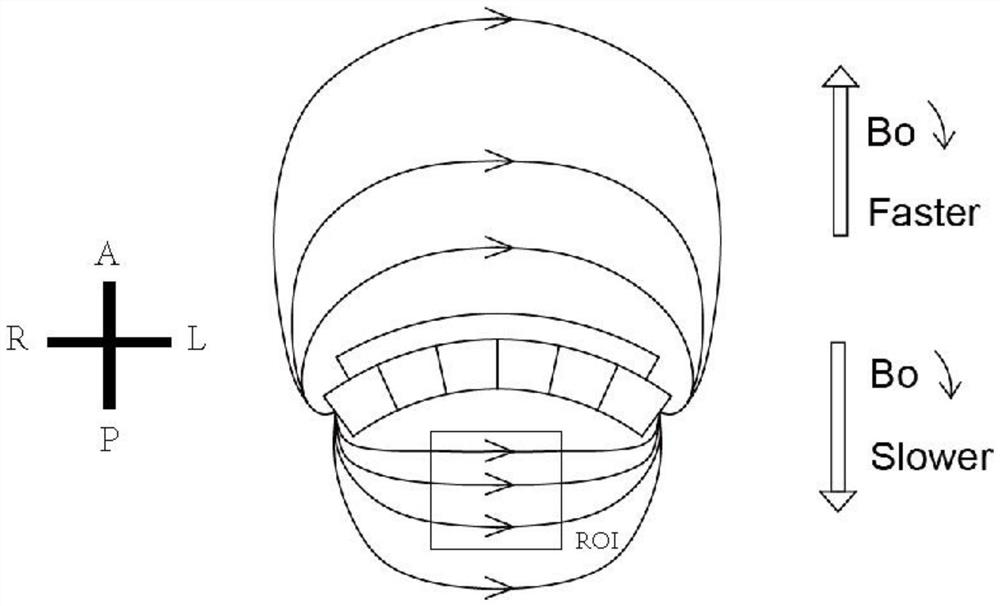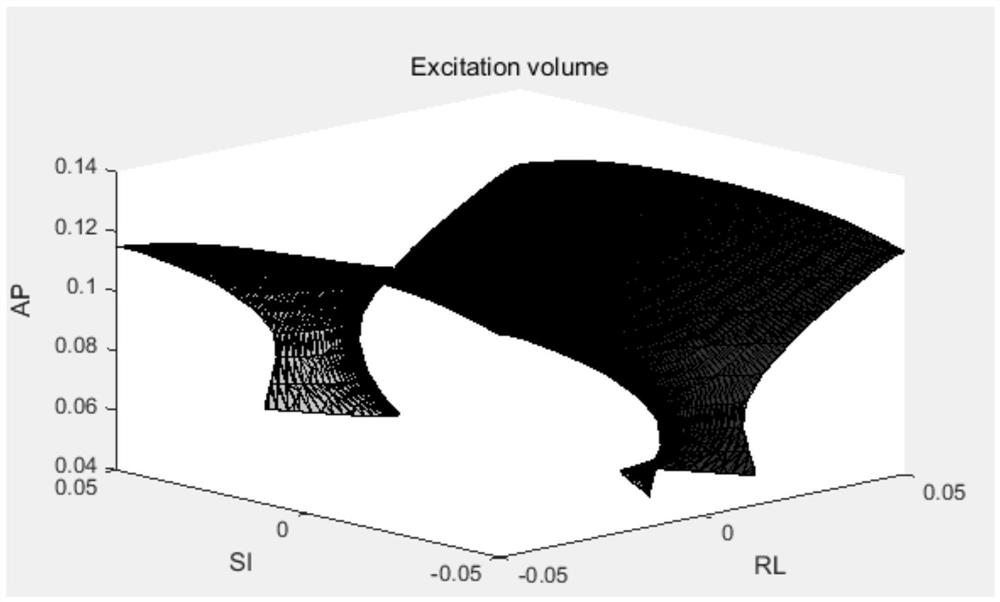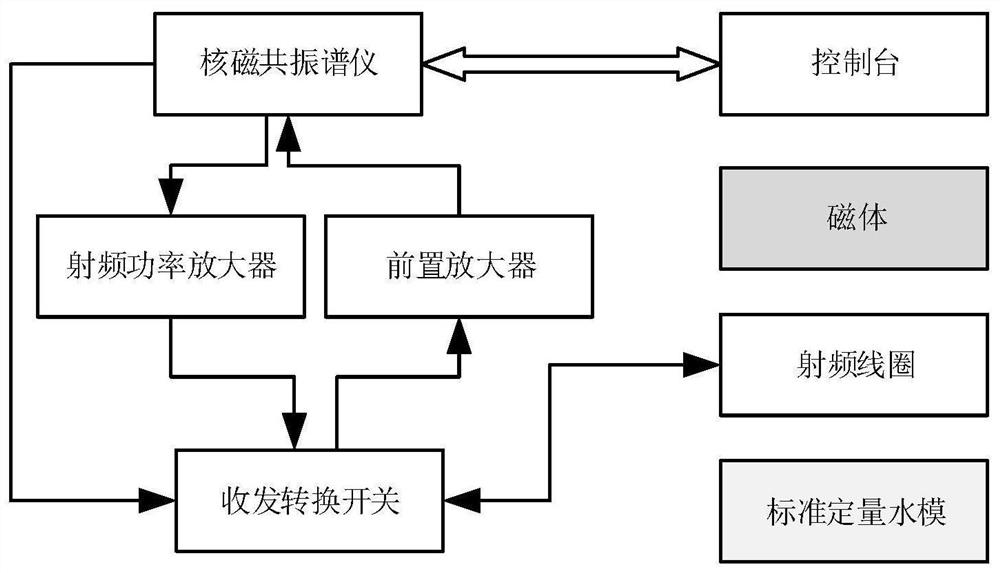A Measuring Method of Gradient Field in Magnetic Resonance System Based on Diffusion Effect
A measurement method and diffusion effect technology, applied in magnetic resonance measurement, magnetic field size/direction, etc., can solve the problems of time-consuming and inaccurate measurement, achieve short measurement time, improve installation and service efficiency, and facilitate measurement
- Summary
- Abstract
- Description
- Claims
- Application Information
AI Technical Summary
Problems solved by technology
Method used
Image
Examples
Embodiment 1
[0095] Figure 4 Shown is a schematic diagram of an apparent diffusion coefficient measurement sequence for a non-uniform field NMR system. The sequence consists of a series of precisely controlled radio frequency pulses, which are respectively the first excitation pulse, the first refocusing pulse, the second refocusing pulse, and up to the nth refocusing pulse. The constant gradient field is the natural gradient field of the magnet and does not need to be controlled.
[0096] The flip angle of the first excitation pulse is θ, and the flip angle of all subsequent refocusing pulses is 2θ; the phase difference between the first excitation pulse and the first refocusing pulse is 90 degrees, and the phase difference between the first refocusing pulse and subsequent refocusing pulses The phase difference between them is 0 degree; the time interval between the first excitation pulse and the first refocusing pulse is T, which is called the diffusion-sensitive gradient duration; the...
Embodiment 2
[0112] Figure 5 Shown is a schematic diagram of the apparent diffusion coefficient measurement sequence of the non-uniform field NMR system, that is, a typical θ-2θ-2θ-2θ... RF pulse sequence: the first excitation pulse flip angle is θ, followed by several Refocusing pulse, the flip angle is 2θ; the phase difference between the first excitation pulse and the first refocusing pulse is 90 degrees, the time interval between the first excitation pulse and the first refocusing pulse is τ / 2, the first The time interval between the refocusing pulse and the first sampling window is τ / 2; the time interval between the refocusing pulses is τ, which is called the echo interval. The constant gradient field is the natural gradient field of the magnet and does not need to be controlled. One excitation collects n echo signals. Often multiple excitations and acquisitions are also required to improve the signal-to-noise ratio by averaging the signal. In order to estimate the size of the gra...
PUM
 Login to View More
Login to View More Abstract
Description
Claims
Application Information
 Login to View More
Login to View More - R&D
- Intellectual Property
- Life Sciences
- Materials
- Tech Scout
- Unparalleled Data Quality
- Higher Quality Content
- 60% Fewer Hallucinations
Browse by: Latest US Patents, China's latest patents, Technical Efficacy Thesaurus, Application Domain, Technology Topic, Popular Technical Reports.
© 2025 PatSnap. All rights reserved.Legal|Privacy policy|Modern Slavery Act Transparency Statement|Sitemap|About US| Contact US: help@patsnap.com



